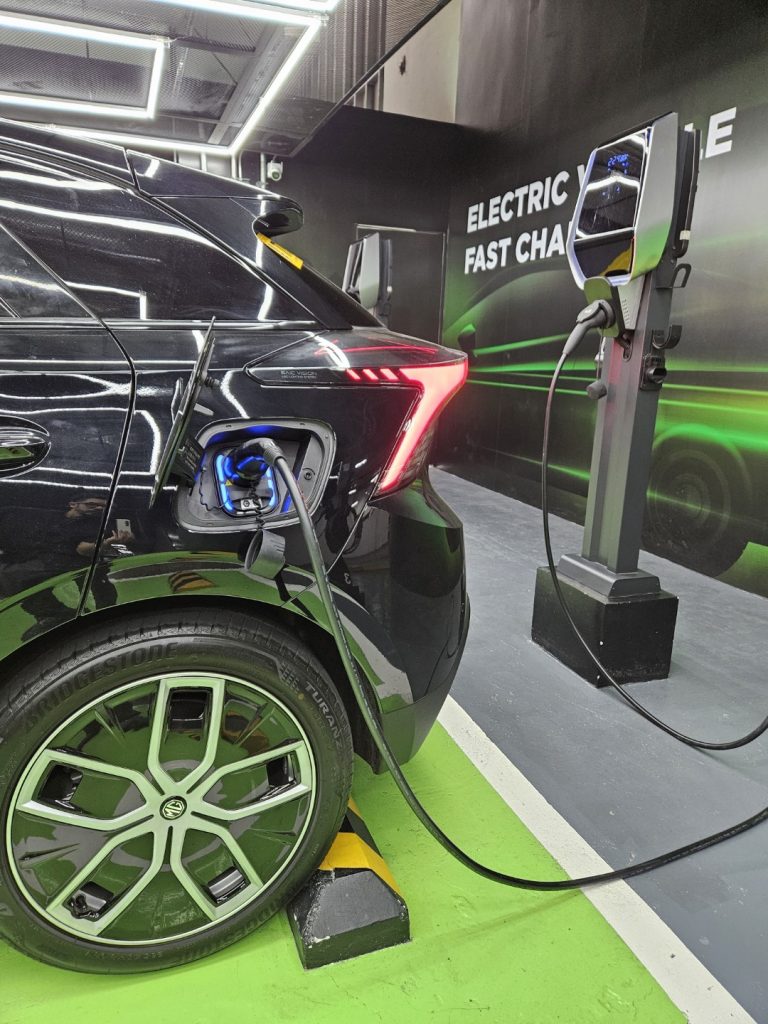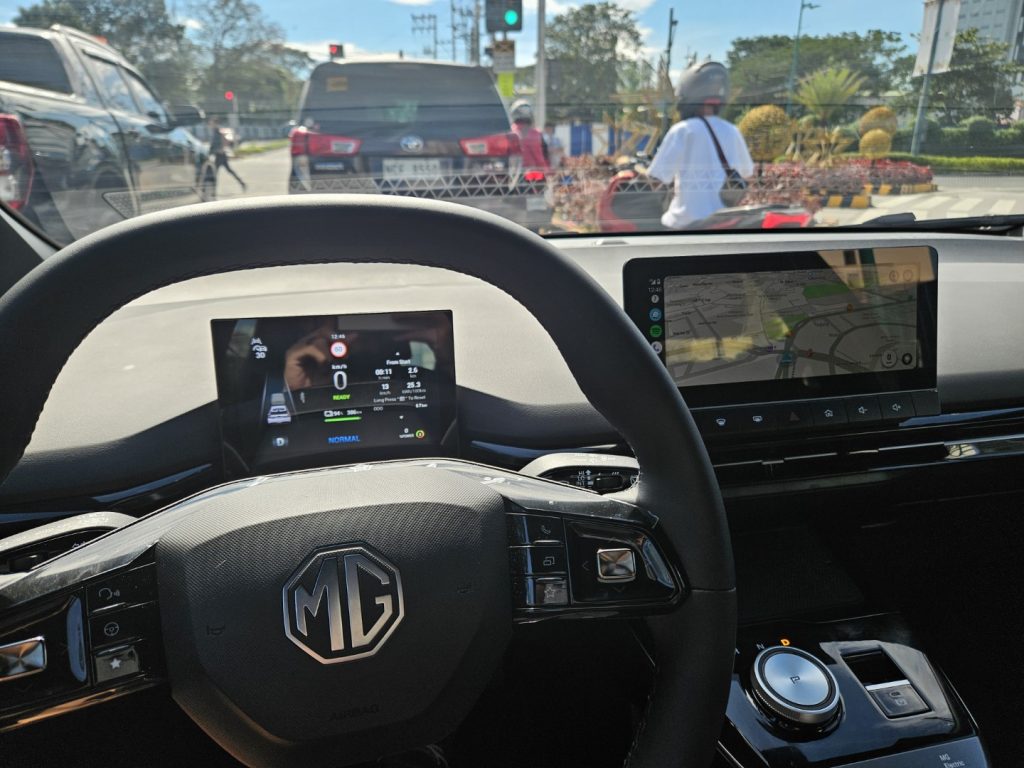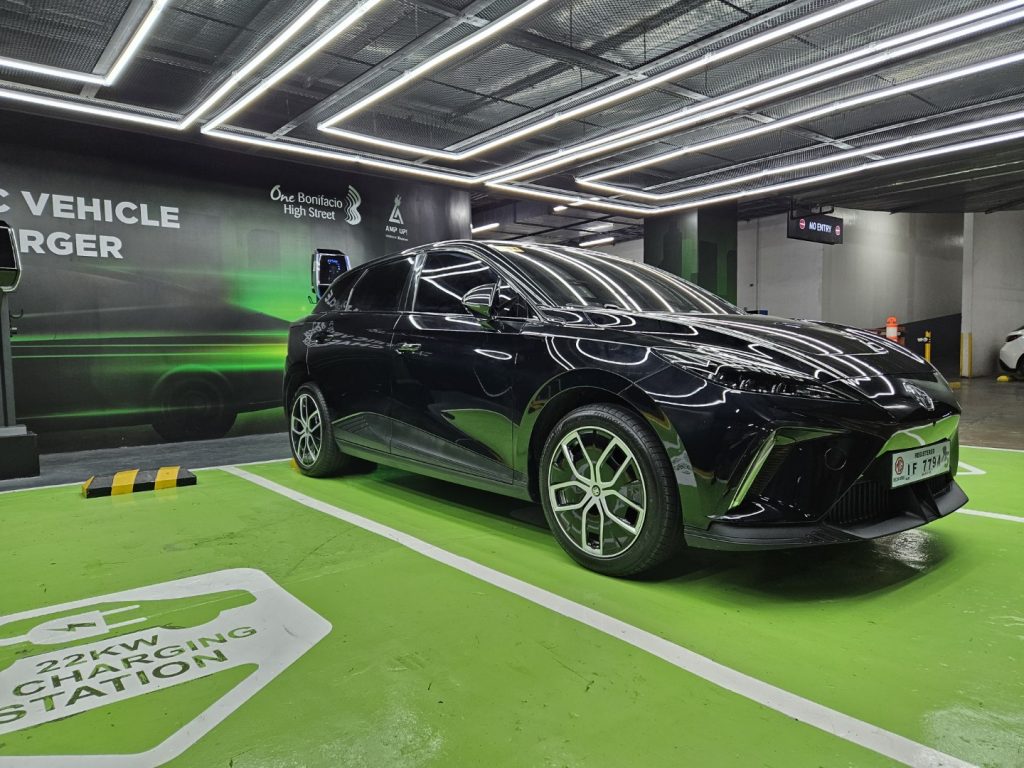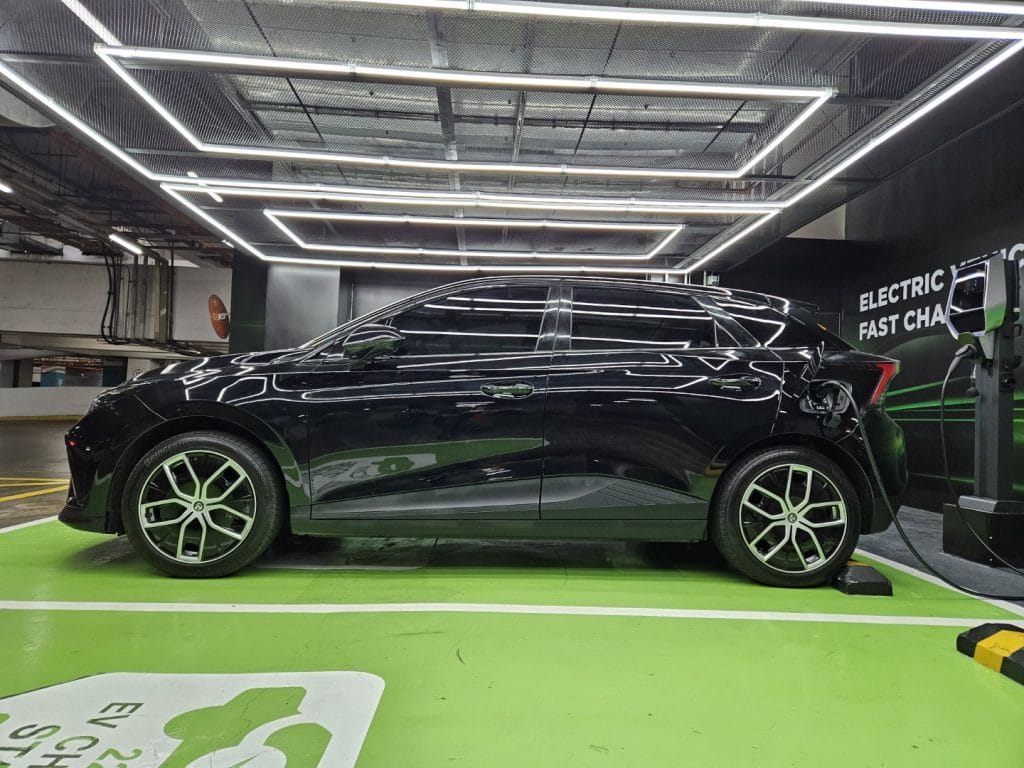Editor’s Note: As PhilSTAR Tech is not a car site (you can go to our sister site Wheels.PH for that), Luis Buenaventura reviews the MG4 electric car like he would a smartphone — charger and all.

Driving the MG4 for the first time is like being transported into the near-future. It’s a prime example of technology actively reducing the amount of work that humans have to do, while at the same time creating new paradigms for energy usage at the societal level.
Its price point is the lowest that you can currently get for vehicles in this class in the Philippines, and I’m hopeful that it and other cars like it will change the way Filipinos think about EVs.
A Very Smart Car
If it’s your first time behind the wheel of this electric car, you may end up looking for a keyhole or a START button. The MG4 has neither. Once you put your foot on the brake, the car comes alive automatically, welcoming you with a “Have a nice day” or a “Good morning.”
Turn the control knob to D and the parking brake automatically disengages. At this point, you’re ready to roll, but you may find yourself still sitting there waiting for something to happen. Decades of interaction with automobiles has trained us to detect even the faintest of engine rumbles, and the distinct lack thereof is somewhat disconcerting.
Your first light tap on the accelerator pedal will nudge you forward a few tentative inches, but your mind will likely still reject the idea that the car is actually running. It is dead silent in the cabin. Buoyed by your own curiosity, your second tap on the pedal is a lot harder, and the sudden force throws you back into your seat.
That’s the other thing about electric cars: with no higher gears to shift to, you can access the full power output of the motor even from a dead stop. This makes zero-to-100 possible in as little as 4 seconds on the MG4 Luxx variant, and 7 seconds on the standard.
Although it doesn’t have an internal combustion engine, it does have about 600 kilos worth of batteries lining its floor. The weight makes the MG4 particularly stable on the corners, and overall gives it the driving feel of a far pricier sedan.
Speaking of price, the MG4 starts at 1.6M pesos. Although this isn’t exactly an entry-level amount of money, its status here in the Philippines does afford the owner some perks that make it worth considering, particularly if you enjoy being an early adopter.

The (Un)Expected Value of EVs
You’ve probably already heard that electric vehicles and hybrids are exempt from the traffic coding schemes in Metro Manila. That exemption is at the heart of the marketing campaign around hybrids like the Nissan Kicks. While that is definitely a plus, in my opinion, the biggest advantage of driving a full-electric car has got to be the free charging in malls, hotels, and some office buildings. So far I have 250 km on my tachometer and I’ve spent exactly zero pesos.
To be fair, I’m fortunate enough to be working in a CBD where every mall offers free EV charging, and I have multiple options within a 5-minute walking radius from my office or gym. An additional advantage: during busy weekdays, parking can be quite scarce in most CBDs, but since the EV-only slots are currently underutilized, your parking is almost always guaranteed.

Forwards to the Future
I’m not an eco-warrior by any means, but it’s endlessly fascinating to me that one of the possible outcomes of EV popularity is the disintermediation of giants like Petron, Caltex, and Shell. Tellingly, Shell recently launched a handful of EV chargers at their gas stations along NLEX and SLEX, but their pricing is very similar to a full tank of petrol.
Since all you really need is access to the grid, any parking structure can potentially be transformed into a revenue-generating power station. The massive infrastructure and logistics costs involved in fuel distribution become a thing of the past. Perhaps more importantly, the notion that everything we have – from our phones to our kitchens to our cars – could all run on electricity creates a universality that progressive districts can optimize for much more efficiently.
Of course, that ideal future is some years away. In countries like the Philippines, our power mix is dominated by coal or fossil fuels, with less than a quarter of our electricity generated by renewable sources. But that’s a slice that is growing steadily with every passing year, and the primary way you increase that is by generating demand for it.
Electric cars alone can’t drive a country’s power mix, but I expect that their increased presence on the roads will at least accelerate the conversation.


